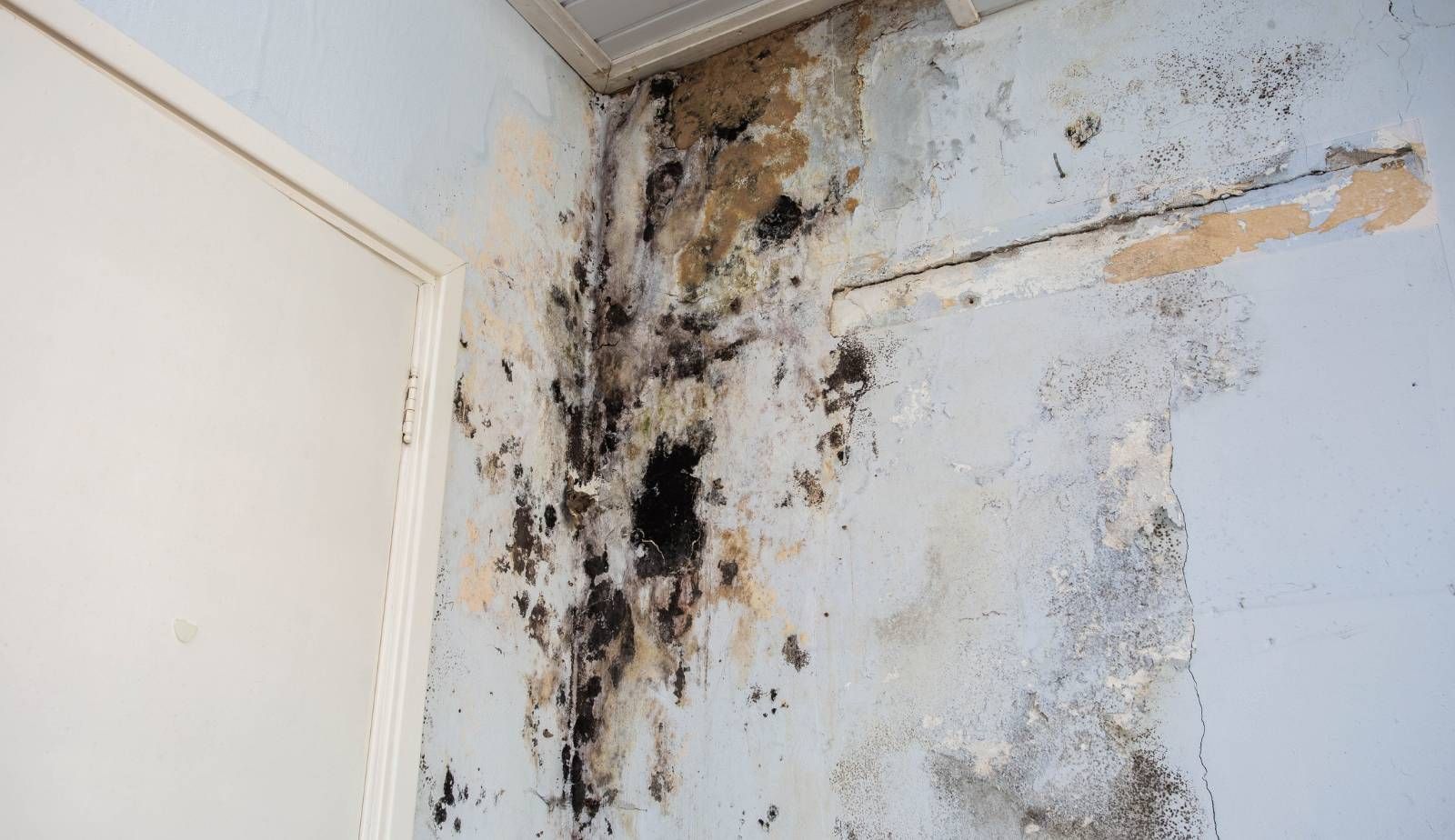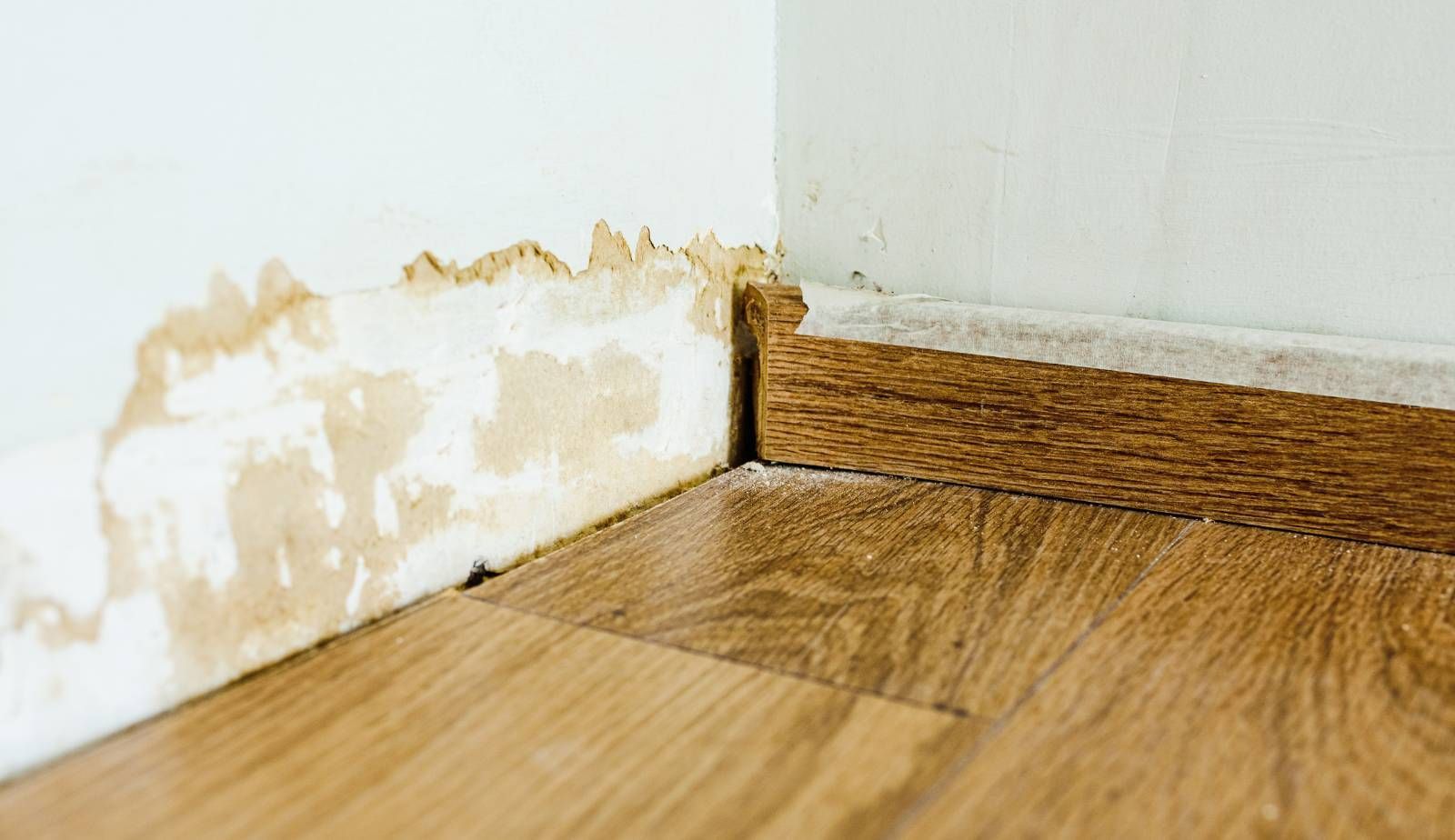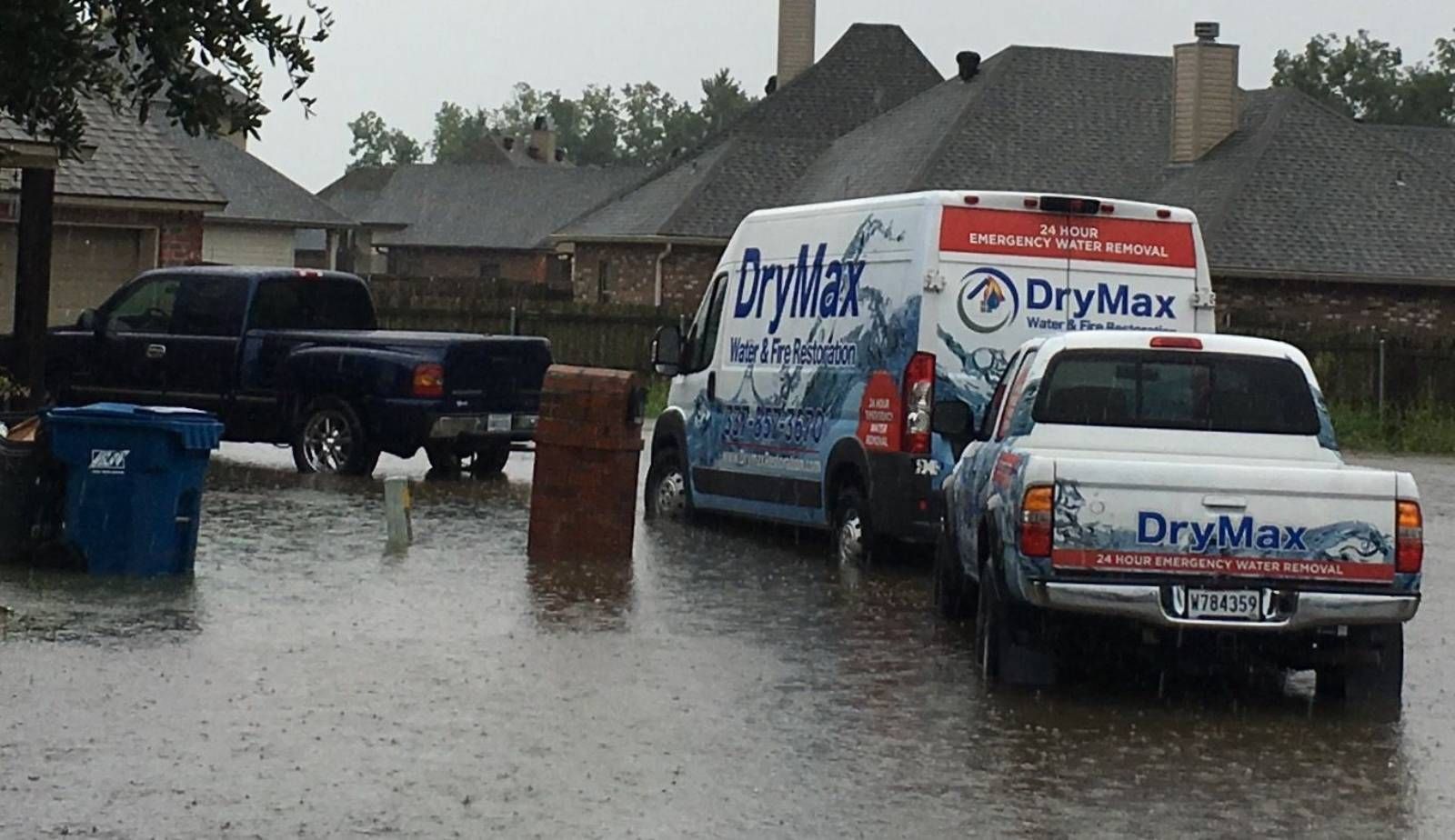Health Hazards of Louisiana Water Damage: Understanding Mold, Bacteria, and Effective Solutions from Drymax
Louisiana residents face significant health hazards due to water damage, particularly from mold and bacteria growth. Exposure to these environmental health risks can lead to serious respiratory issues and other health complications. The aftermath of flooding or leaks creates ideal conditions for harmful microorganisms, which can proliferate rapidly if not addressed promptly.
Addressing water damage effectively is crucial for maintaining public health. Homeowners must act quickly to mitigate the impact of moisture in their living spaces. Regular inspections, immediate water removal, and professional remediation services are essential steps to manage these hazards before they escalate into more severe health problems.
Drymax emphasizes the importance of understanding the connection between water damage and health risks. By staying informed and proactive, residents can protect themselves from potential ailments associated with stagnant water and mold.
Understanding Water Damage in Louisiana
Water damage in Louisiana presents significant health and structural risks due to the state's unique environmental challenges. Understanding the historical impact of flooding and the geographic and climatic factors at play is crucial for residents and property owners.
Historical Impact of Flooding
Louisiana has a long history of flooding, with notable events including Hurricane Katrina in 2005, which devastated New Orleans and surrounding areas. The extensive water damage caused by such disasters often leads to long-term issues like mold growth and structural problems.
After Katrina, many homes remained waterlogged, creating ideal conditions for mold to thrive. The recovery efforts revealed widespread mold in affected areas, leading to health concerns for residents.
Frequent flooding events highlight the importance of effective water damage remediation strategies. Awareness of historical patterns can guide future planning and response to similar events.
Geographic and Climatic Factors
Louisiana's geography makes it particularly vulnerable to natural disasters. The state's low-lying terrain and proximity to large bodies of water increase the risk of flooding during hurricanes and heavy rains.
The hot, humid climate also contributes to rapid mold growth in water-damaged areas. Mold spores thrive in moisture, and Louisiana's climate creates a challenging environment for remediation.
To effectively address water damage, residents must understand their local conditions. Implementing preventative measures, such as proper drainage and flood barriers, can mitigate the impact of flooding and safeguard health. Awareness and preparedness are key to minimizing risks associated with water damage.
Health Risks Associated With Mold
Mold can pose serious health risks, particularly in water-damaged environments. Exposure to mold spores and mycotoxins may trigger various health issues. Understanding the implications of mold growth and addressing indoor air quality are essential for well-being.
Mold Growth and Exposure
Mold thrives in damp conditions, making water-damaged areas prime candidates for growth. Mold spores can become airborne and easily spread throughout a building. When inhaled, they may cause allergic reactions, asthma attacks, and other respiratory issues.
Individuals may experience symptoms such as:
- Sneezing
- Coughing
- Nasal congestion
- Skin irritation
Certain types of mold, such as Stachybotrys chartarum (commonly known as black mold), can produce mycotoxins that exacerbate health problems. The CDC emphasizes that mold exposure can aggravate asthma and trigger allergic reactions in sensitive individuals. Effective detection and management of mold are crucial to safeguarding health.
Mold Remediation and Indoor Environmental Quality
Addressing mold issues involves proper remediation to restore indoor air quality. The EPA recommends identifying the moisture source, as controlling humidity is vital for preventing mold regrowth.
Key steps in effective remediation include:
- Containment: Seal affected areas to prevent mold spores from spreading.
- Removal: Safely remove moldy materials, including drywall or carpeting, where necessary.
- Cleaning: Use appropriate cleaning solutions to disinfect surfaces.
Post-remediation, it's important to monitor indoor conditions. Regular inspections help ensure the environment remains free of moisture and mold. Addressing this issue not only protects health but also improves overall indoor environmental quality.

Bacterial and Viral Contaminants
Water damage can lead to the proliferation of various bacterial and viral contaminants. Understanding the risks associated with these pathogens is essential for maintaining health and safety in affected areas. Key concerns include pathogens found in sewage and floodwater, as well as the waterborne diseases they may cause.
Sewage and Floodwater Pathogens
Sewage and floodwater often contain a mix of harmful bacteria and viruses. Common pathogens include E. coli, which can lead to severe gastrointestinal illness, and viruses such as hepatitis A.
Exposure to these contaminants can happen through direct contact or ingestion of contaminated water. Residents in flood-prone areas should remain vigilant. Efforts to purify affected water sources and practice good hygiene are crucial.
The presence of cholera and typhoid fever can also be a concern in flooded environments. Both diseases are transmitted through contaminated water and can result in serious health issues, particularly in vulnerable populations.
Waterborne Diseases and Outbreaks
Water damage may trigger outbreaks of various infectious diseases linked to contaminated water sources. These include salmonella and typhoid fever, both of which pose significant health risks.
To mitigate health risks, residents should avoid drinking untreated water in affected areas. Proper sanitation practices, such as boiling water or using purification tablets, can help. Awareness of local health alerts is vital for staying informed about potential outbreaks.
Additionally, standing water can become a breeding ground for mosquitoes, increasing the risk of diseases like West Nile virus and Zika virus. Addressing water damage promptly can help prevent both waterborne illnesses and vector-borne diseases associated with stagnant water.
The Presence of Toxins and Chemicals
Water damage in Louisiana presents significant risks due to the presence of various toxins and chemicals. These contaminants can originate from floodwaters, industrial waste, and household materials, leading to serious health hazards.
Toxins in Flood Waters
Floodwaters often carry a mix of toxins that pose health risks. Common contaminants include sewage, heavy metals, and chemical runoff from nearby industrial areas.
Exposure to these toxic substances can lead to immediate health effects, such as gastrointestinal issues and skin rashes. Long-term exposure may contribute to respiratory problems and other chronic conditions.
Individuals should avoid direct contact with floodwaters and ensure they wear protective clothing if necessary. Proper filtration and purification methods are essential for any water sourced from affected areas.
Chemical Hazards During and After Flooding
Chemical hazards can also stem from household items affected by flooding. Products such as paint, cleaners, and pesticides can leach toxins when water is introduced.
Organophosphate and carbamate insecticides, for example, impact the nervous system and can result in serious health complications if inhaled or absorbed through the skin. Additionally, mold growth can introduce toxins like mycotoxins, which worsen respiratory and immunological conditions.
Addressing these hazards involves proper cleanup and disposal of contaminated materials. Engaging professional services to mitigate these risks is crucial for ensuring safe living conditions post-flooding.

Chemical Hazards During and After Flooding
Chemical hazards can also stem from household items affected by flooding. Products such as paint, cleaners, and pesticides can leach toxins when water is introduced.
Organophosphate and carbamate insecticides, for example, impact the nervous system and can result in serious health complications if inhaled or absorbed through the skin. Additionally, mold growth can introduce toxins like mycotoxins, which worsen respiratory and immunological conditions.
Addressing these hazards involves proper cleanup and disposal of contaminated materials. Engaging professional services to mitigate these risks is crucial for ensuring safe living conditions post-flooding.
Personal Safety and Protective Measures
When dealing with water damage, safety is paramount. Ensuring proper protective measures can significantly minimize health risks associated with mold, bacteria, and other contaminants. The following addresses essential protective gear and best practices for respiratory protection.
Essential Protective Gear
Personal Protective Equipment (PPE) is crucial in environments with potential water damage. Key items include:
- Gloves: Nitrile or rubber gloves protect against harmful substances.
- Boots: Waterproof, sturdy footwear helps prevent slips and contact with contaminated water.
- Coveralls: Disposable or washable coveralls can shield skin and clothing from contaminants.
- Goggles: Safety goggles safeguard the eyes from splashes and irritants.
Wearing the right gear not only protects individuals from hazards but also helps maintain a safe working environment. Assessment of the specific environment will guide the selection of appropriate PPE.
Best Practices for Respiratory Protection
In areas affected by water damage, respiratory protection is essential. The use of N95 respirators or higher-rated masks is advisable. These devices filter out particulate matter, including mold spores and harmful bacteria.
To ensure effectiveness, the following practices should be noted:
- Fit Testing: Proper fit is critical for maximum protection. A tight seal prevents contaminants from bypassing the mask.
- Regular Inspection: Users must check their respirators for damage before each use and replace them as necessary.
- Training: Familiarization with correct usage procedures is vital for optimal safety.
Following these practices enhances individual safety while tackling environmental health risks associated with water damage.
Practical Remediation and Cleanup Strategies
Effective remediation and cleanup are essential in addressing health hazards associated with water damage. This process involves careful removal of mold and debris and restoring indoor air quality to ensure a safe environment.
Mold and Debris Removal
Mold remediation is a critical step following water damage. It is essential to identify affected areas and ensure proper containment to prevent spores from spreading. Remediation workers should wear protective gear, including masks and gloves, to minimize exposure.
Debris removal involves clearing out damaged materials such as insulation, drywall, and carpeting. Using a mixture of soap and water, surfaces can be cleaned to eliminate surface mold. For extensive infestations, professionals may need to utilize specialized equipment, like HEPA vacuums, to ensure thorough cleanup.
In some cases, air samples can be taken to confirm the efficacy of the remediation efforts. This step ensures that mold levels are reduced to safe thresholds, protecting the occupants’ health.
Restoring Indoor Air Quality
Restoring indoor air quality is vital after water damage and mold remediation. Dehumidifiers play a significant role in this process. They help maintain optimal humidity levels, which discourage further mold growth.
Ventilation is also critical. Opening windows and using exhaust fans can improve air circulation, aiding in the drying process. Additionally, using HEPA air purifiers can capture remaining airborne mold spores and other allergens, enhancing overall air quality.
Regular monitoring of humidity levels is advisable. It is essential to keep levels below 50% to prevent mold resurgence. This ongoing management of indoor air quality can significantly contribute to the health and safety of the living environment.
Public Health Precautions and Food Safety
Water damage can lead to significant public health risks, including the spread of disease and contamination of food and water supplies. Addressing these issues effectively is critical to ensure community safety and well-being.
Preventing Disease and Infection
To mitigate health risks from water damage, it is essential to take public health precautions. Mold and bacteria can proliferate in damp environments, leading to respiratory issues and infections. Measures include:
- Immediate Cleanup: Remove standing water and moisture within 24-48 hours.
- Protective Gear: Use gloves, masks, and protective clothing when cleaning contaminated areas.
- Addressing Cuts: Ensure individuals receive tetanus vaccinations if there are cuts or wounds exposed to contaminated water.
These steps reduce the likelihood of disease and protect both individual and community health. Routine inspections of affected areas can also help in identifying potential health hazards early on.
Ensuring Potable Water and Food Protection
Maintaining potable water is crucial after water damage occurs. Local authorities must test water supplies for contaminants and advise on safety measures. Key actions include:
- Boiling Water: If contamination is suspected, boil water for at least one minute before use.
- Avoiding Flooded Areas: Do not consume food or water that has come into contact with floodwaters. It may harbor harmful pathogens.
- Storing Food Safely: Discard any food items that have been soaked in contaminated water. Non-perishable items in sealed containers may be safe if they remained dry.
Following these guidelines ensures food safety and helps prevent waterborne diseases, protecting public health after water damage incidents.
Long-Term Effects and Mitigation Efforts
Water damage in Louisiana can have lasting effects on public health, particularly through the proliferation of mold and harmful bacteria. Addressing these concerns involves both community resilience strategies and proactive steps for preventing future incidents.
Improving Community Health Resilience
To bolster community health following water damage, residents must work together to establish effective response and recovery plans. The Louisiana Department of Health and Hospitals plays a crucial role in this effort by providing guidelines for safe evacuation and restoration practices after natural disasters.
Engaging local health departments and organizations to conduct regular health assessments can identify respiratory health effects related to mold exposure. Community workshops on mold prevention and safe clean-up techniques are essential.
Key Actions:
- Establish local health education programs.
- Create a community response team for disaster situations.
- Encourage residents to report mold issues promptly.
Future Flood Damage Prevention
Preventing future flood damage is essential for safeguarding community health. Implementing better land-use planning and comprehensive flood management strategies can significantly reduce risks. Enhanced drainage systems and green infrastructure can mitigate water accumulation in vulnerable areas.
In addition to infrastructural improvements, public education on emergency preparedness is vital. Individuals should understand evacuation routes and resources available during disasters. Awareness campaigns can also emphasize the dangers of carbon monoxide exposure from improper generator use during power outages.
Prevention Strategies:
- Invest in improved drainage systems.
- Promote green spaces to absorb rainwater.
- Conduct community readiness drills before the flood season.

Frequently Asked Questions
Understanding the health risks associated with water damage is crucial. Mold and bacteria growth can pose serious threats to health. The following questions address specific concerns related to these issues in Louisiana.
What are the common health risks associated with exposure to mold caused by water damage?
Exposure to mold can lead to respiratory issues, allergic reactions, and other health problems. Symptoms like coughing, sneezing, and skin irritation may manifest in sensitive individuals. Long-term exposure can result in more severe conditions, especially for those with pre-existing health issues.
How should one approach mold remediation in Louisiana, according to state laws?
In Louisiana, mold remediation must follow specific state guidelines to ensure safety. Homeowners should engage certified professionals who comply with state laws. Proper inspection and assessment are necessary before beginning remediation efforts to address all affected areas effectively.
What certification is required for professionals performing mold remediation in Louisiana?
Professionals conducting mold remediation must hold a valid Mold Assessment or Mold Remediation license issued by the state. This certification ensures they have the necessary training and knowledge to safely handle mold-related issues. Homeowners should verify the credentials of any contractor before hiring.
In what ways can water damage contribute to bacterial growth in homes?
Water damage can create a conducive environment for bacteria, particularly in areas with stagnant water. Contaminated water often contains harmful microorganisms that can thrive in moist conditions. This increases the risk of exposure to serious health hazards for residents.
What steps should be taken for a safe and effective mold inspection in New Orleans?
A thorough mold inspection should begin with identifying visible mold and musty odors. Inspectors should also assess hidden spaces such as attics and basements, where moisture may accumulate. Utilizing specialized equipment like moisture meters can help detect high humidity levels indicative of mold growth.
How did Hurricane Katrina impact the water contamination levels in affected areas?
Hurricane Katrina led to significant water damage and contamination in many regions of Louisiana. Floodwaters mixed with sewage and other hazardous materials increased the risk of bacterial and mold growth. The aftermath required extensive cleanup and remediation efforts to address health risks in affected communities.
You might also like
DryMax Restoration Blogs




